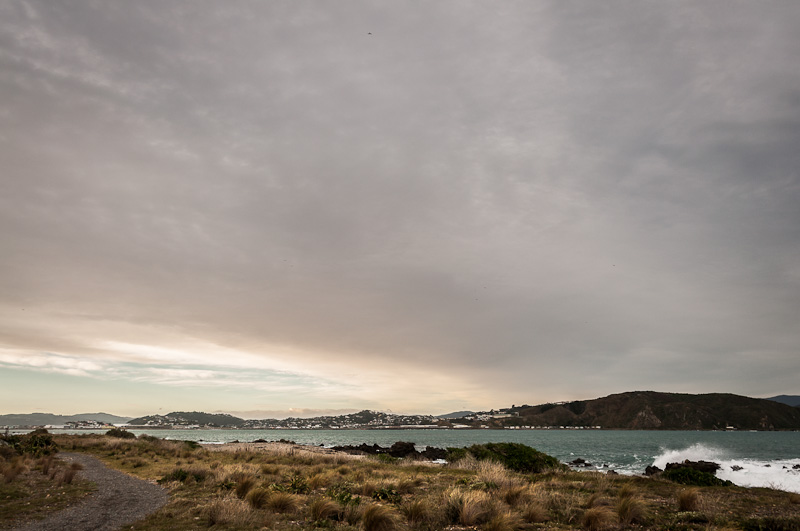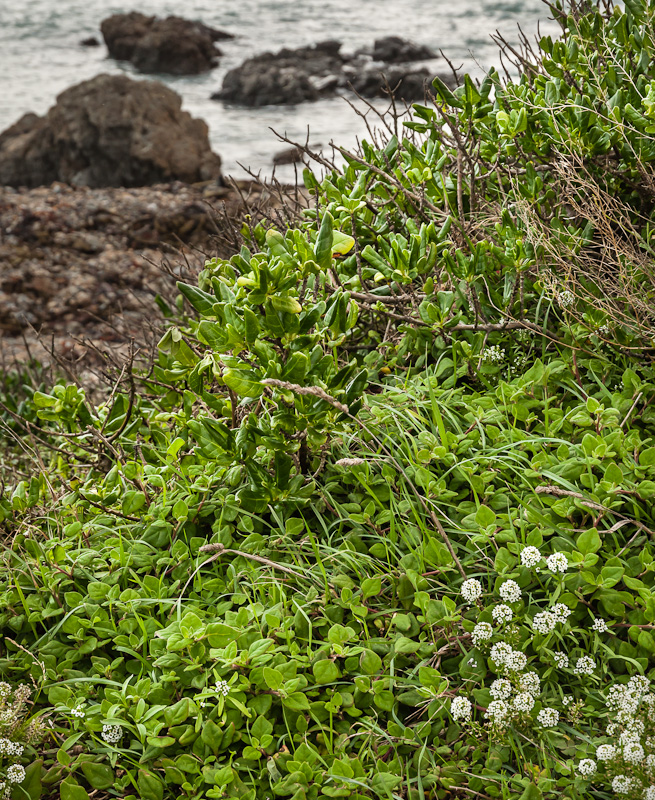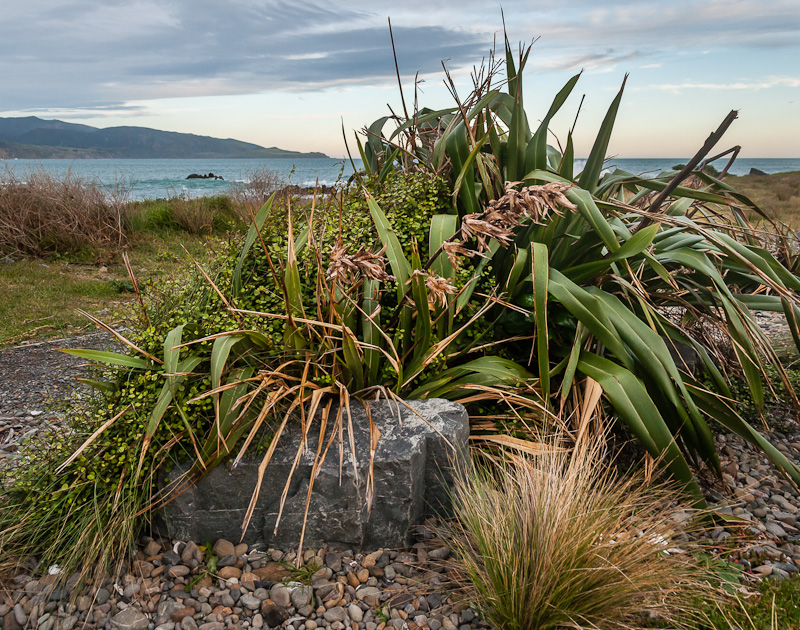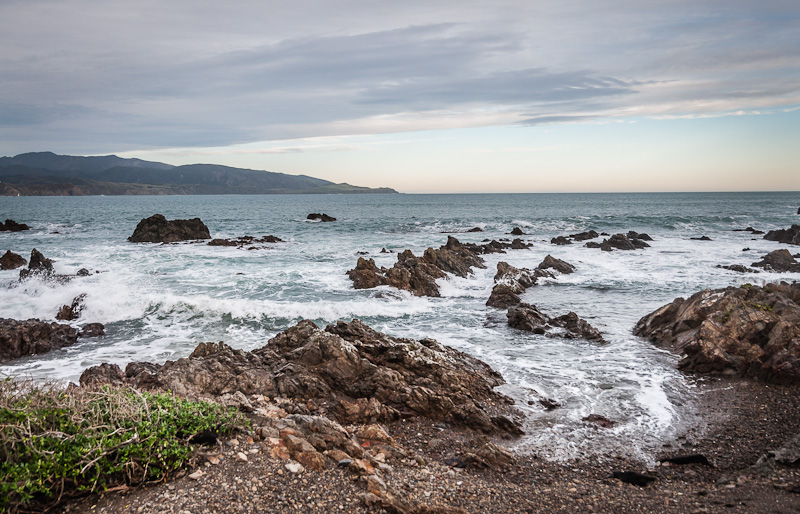I was on my way home along the south coast, evening was beginning to fall, and the light and high cloud over Lyall Bay cast a rather eerie atmosphere. Wanting some quiet, I stopped at Te Raekaihau Point, intending to watch the sky. Lots of people visit this place, sitting in cars to watch the waves, wandering on the shore, diving, playing, walking dogs, doing photography. Many "freedom campers" in their vans have visited during summer, but in winter it is much quieter, an attractive bleakness about it.
It is a great place to view the coast and, after a few years of ecological rehabilitation, to see native plants that cope in tough coastal conditions.
Looking back to Lyall Bay from the exposed eastern part of the point, where tussock grasses are struggling and only gradually getting established, the cloud seemed to almost fill the sky.

Tangles of green on the edge of the stony beach reveal wind-shaped and stunted taupata (Coprosma repens) with dark glossy leaves curling back to reduce moisture loss, and clambering up its raggedy branches the red stems and brighter green triangular leaves of New Zealand spinach, kōkihi. The leaves of the "spinach" (Tetragonia tetragonioides) are fleshy and taste rather bitter but are a source of vitamin C. It was used as a vegetable by explorer James Cook, hence its other names - Botany Bay spinach, Cook's cabbage, sea spinach. The leaves are best blanched to reduce the oxalic acid content before cooking and the youngest leaves are the least likely to cause that weird puckery mouth feel.
The white-flowered alyssum is a garden escape - one of many introduced plants that are too successful and have earned weed status in this setting.

Only a metre or two further away from the water's edge, a green carpet -Wire vine (Muehlenbeckia complexa) with its bright little round leaves scrambling through the darker more complex leaves of sand piripiri (Acaena pallida).

The Muehlenbeckia is a very determined little vine - one should take care if planting it in a garden. Here it is working on smothering a coastal flax plant (Phormium cookianum). You get an idea of how bleak this area is for plants - restoration plantings are barely holding on, there is a lot of dead vegetation and there are lots of weeds. Not conventionally pretty.

Horokaka (Disphyma australe, the native iceplant) growing on shingle and rocks also reminded me of the random messiness of life. It refused to make a nicely composed image. But I enjoy the challenge to my eyes - no one place to look. Ah, nature.

All evidence of the amazing tenacity of adapted plants. Despite iceplant's feat of growing where no soil is to be seen, I think the most impressive here is the taupata - growing in the rocks hit by the waves.

As I was admiring plants' crazy survival capacities, a little seal emerged from under a taupata tangle and managed to swim between these rocks out to the open water, surfing and diving. I have never seen one there before. Alas, I was unprepared and didn't have a long lens on my camera so I didn't get a decent photo - the little black body and flipper just looked like more rocks.
My attention up till then had been caught by plants but the sky was doing interesting things too - another post methinks. Even in pretty unprepossessing places there is an abundance of interest and wonder in the natural world if we just open our senses and give ourselves time to connect with it.